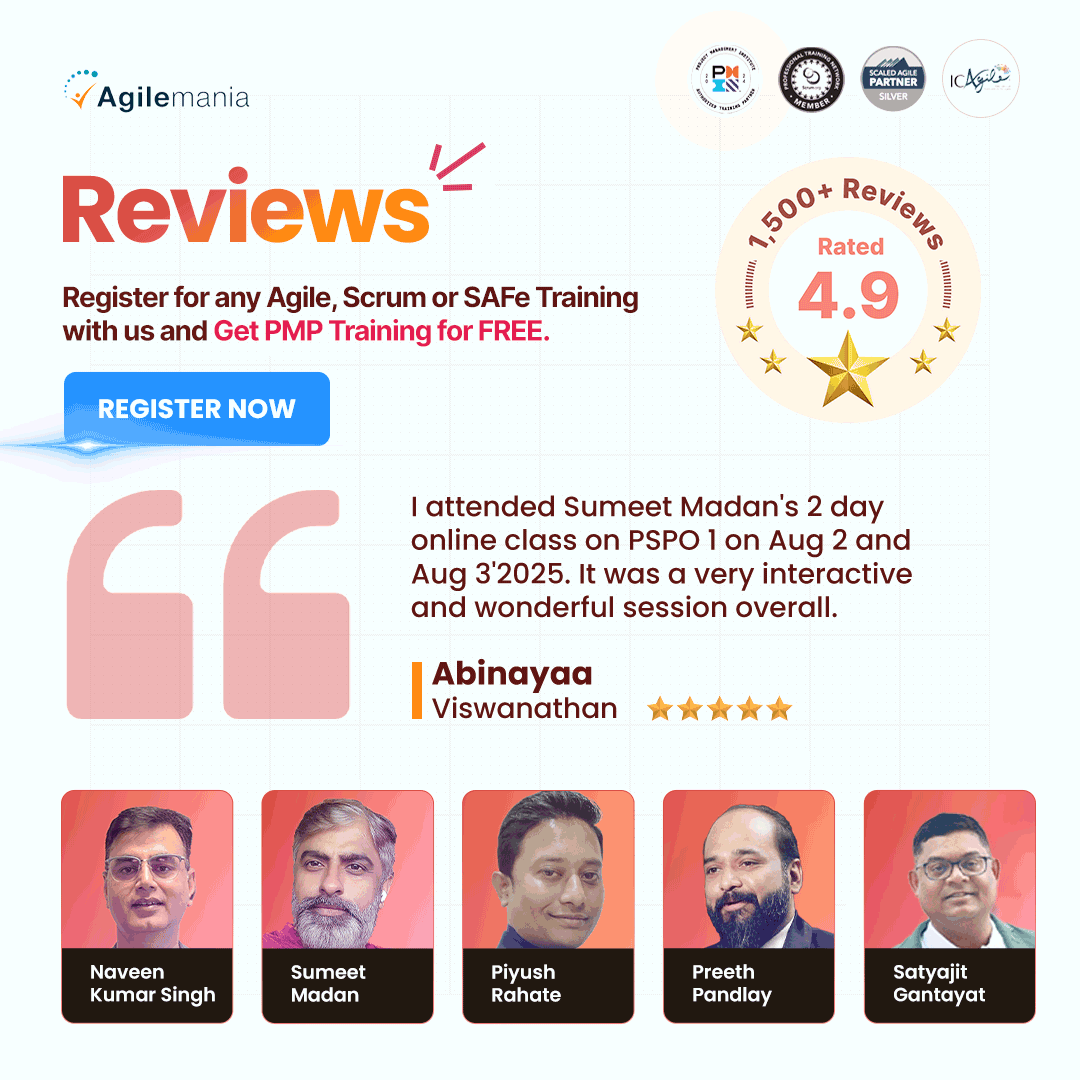Clear, Engaging, and Worth It
To be honest, before joining the training I was blank as I had no idea about Agilemania and how the Read More...
To be honest, before joining the training I was blank as I had no idea about Agilemania and how the training would be, especially when the duration per day is large. The communication from Saba was very clear and she was approachable for any clarifications. I must appreciate the smooth way of organising - from the day of enrollment till issuing certificate.
I am fortunate to have Mr. Satyajit as my instructor for this course. The way he taught was clear, engaging and very effective. It has been more than a decade since I sat for a long session but his interactive teaching style and real-world examples made me stay connected throughout the session. Also, I have gained more knowledge on Project Management and practices. When I think about the practices in my organisation, three questions have popped-up in my mind after attending this training - 'How it has to be', 'How it is now' and 'How can I change certain things with management support if I am given the PM role'. I am sure that the information I learnt through this training on Project Management will really help me to take up the managerial role in my organisation with confidence.
~ Maruthu Srinivasan
07 Jun - 08 Jun, 2025


















































































































